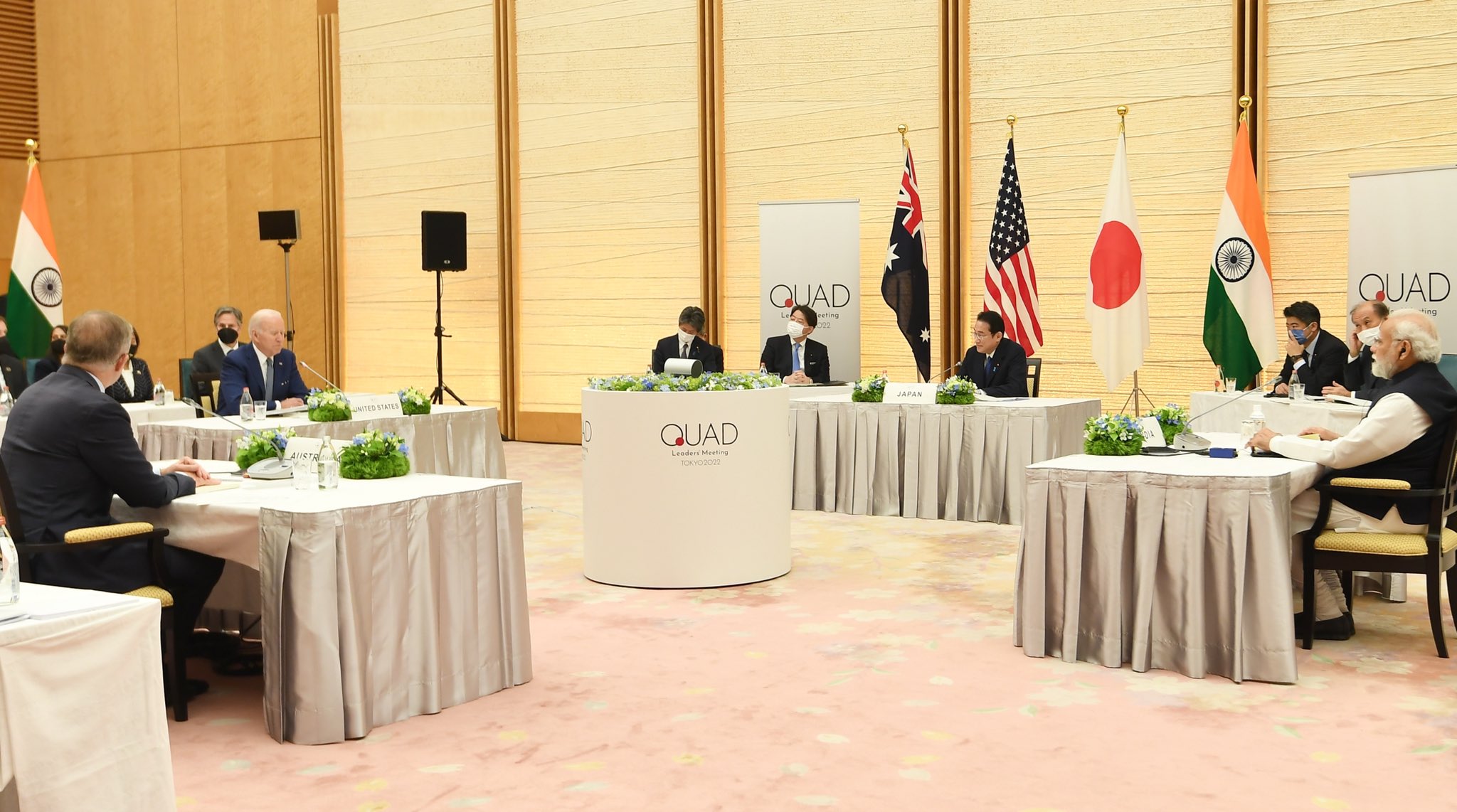
The Quad Summit: Achievements and Pitfalls

Prime Minister Narendra Modi visited Tokyo at the invitation of the Japanese Prime Minister Fumio Kishida to participate in the second in-person Quad (Australia, India, Japan, USA) Summit on 24th May, 2022. The first in-person Summit was held in Washington DC in September, 2021. In addition to attending the Quad Summit, PM Modi also met US President Joe Biden, his Japanese counterpart, and newly elected Australian Prime Minister Anthony Albanese bilaterally, as well as several Japanese business leaders and captains of industry. The visit proved to be a welcome opportunity for PM Modi and the other leaders to meet and interact with the new Australian leadership.
No political or security analyst could have anticipated a little more than a year ago when Joe Biden took office as President of the United States that four meetings of The Quad would take place within a span of 15 months! President Biden surprised all his detractors by hitting the ground running and by organizing the first virtual meeting of the foreign ministers of the Quad nations in mid-February, 2020, and a virtual Summit among the leaders of the four countries in March, 2020. This was followed by an in-person meeting in Washington DC in September, 2021 and again a virtual Summit in March this year. The fact that four Quad Summits, including the one on 24th March, 2022, have been organized in 14 months is not only unprecedented, but also testimony to the commitment and determination of the four member countries to realize its objectives.
Since the first Quad Summit in March last year, the Grouping has gone from strength to strength. The fact that Biden was willing to travel to Tokyo when a war in Europe is still raging is proof that Biden and the US have not taken their eyes off the Quad and that countering and balancing China in the Indo-Pacific region and the wider world continues to be the US’s most critical challenge.
The Ukraine Conflict
Some apprehensions were expressed before the Summit that Ukraine might hijack the discussions at the Summit. USA, Japan and Australia are on the same page as far as Russia’s invasion of Ukraine is concerned and the death, carnage and destruction wreaked by it. The Indian position is however slightly different. India feels compelled to maintain its legacy relations with Russia, particularly in import of defence and military equipment.
There is broad understanding of the Indian stance amongst its western interlocutors. This was demonstrated during the India-US 2+2 meeting on 11th April, 2022 at which President Joe Biden and Prime Minster Narendra Modi also interacted with each other virtually. Discussions on the Russia-Ukraine conflict also took place when PM Modi visited Germany, Denmark (for bilateral and the second India-Nordic Summit) and France. In all these deliberations, a reference to the inviolability of the UN Charter and principles of territorial integrity and sovereignty of nations, as well as to the human sufferings in Ukraine was made in the Joint Statements, but the issue was not allowed to overshadow deliberations in other areas.
Similar was the case in the discussions in Tokyo. Ukraine does find a brief mention but major part of the Joint Statement is devoted to cooperation amongst the four countries and more for promoting peace, stability and prosperity in the Indo-Pacific.
The China Factor
Pushing back against the expansionist policy of China in the South China Sea, East China Sea and elsewhere was the raison d’etre of revival of the Quad and the Indo-Pacific in 2017. Although China does not find a mention explicitly in the Joint Statement, there are several references which clearly and unmistakably point towards China and its activities. The Joint Statement says that the Grouping strongly supports ‘’the principles of freedom, rule of law, democratic values, sovereignty and territorial integrity, peaceful settlement of disputes without resorting to threat or use of force, any unilateral attempt to change the status quo, and freedom of navigation and over flight, all of which are essential to the peace, stability and prosperity of the Indo-Pacific region and to the world.’’ The vision of a free, open, resilient, prosperous and inclusive Indo-Pacific has been reiterated. All these declarations are directed at China because of its policies of creating artificial islands, and occupying and militarizing islands, shoals and reefs which according to the UN Convention on the Law of the Sea 1982 belong to other countries in the region. In a specific reference to China’s activities in the region, the leaders declare that they ‘’will champion adherence to international law, particularly as reflected in the UN Convention on the Law of the Sea (UNCLOS), and the maintenance of freedom of navigation and over flight, to meet challenges to the maritime rules-based order, including in the East and South China Seas.’’
The Indo-Pacific Partnership for Maritime Domain Awareness (IPMDA) initiative, launched on the sidelines of the Summit, is also designed to counter China’s activities of illegal fishing in the waters of the Indian and Pacific Oceans. It aims to work with regional partners to respond to humanitarian and natural disasters, and combat illegal fishing. IPMDA seeks to ‘’support and work in consultation with Indo-Pacific nations and regional information fusion centers in the Indian Ocean, Southeast Asia, and the Pacific Islands by providing technology and training to support enhanced, shared maritime domain awareness to promote stability and prosperity in the seas and oceans.’’ It is estimated that China is responsible for about 95% of illegal fishing in these waters and beyond. This is a first step in the process of making China follow and abide by international law and rules on this issue. This was a subject discussed during the US-ASEAN Summit too that took place in Washington DC on 12-13 May, 2022. At that Summit, the US offered the deployment of a Coast Guard vessel to the region to help bolster the region’s maritime security and combat what has been described as China’s illicit fishing.
Terrorism
The Joint Statement contains explicit and far-reaching references to action against terrorism. The leaders condemned ‘’unequivocally terrorism and violent extremism in all its forms and manifestations and reiterated that there can be no justification for acts of terror on any grounds whatsoever.’’ They denounced ‘’the use of terrorist proxies and emphasized the importance of denying any logistical, financial or military support to terrorist groups which could be used to launch or plan terror attacks, including cross-border attacks.’’ They reiterated their ‘’condemnation of terrorist attacks, including 26/11 Mumbai and Pathankot attacks.’’ Needless to say, all these references are directed against the terrorist policies and activities of Pakistan.
The Joint Statement
The Joint Statement contains ambitious goals and objectives relating to Infrastructure (the leaders decided to make available more than US$50 billion over the next five years for infrastructure development in the Indo-Pacific region); Covid-19 and healthcare (Quad countries provided at least 265 million doses of Covid-19 vaccines to Indo-Pacific nations); cyber security; climate change (launch of the “Quad Climate Change Adaptation and Mitigation Package (Q-CHAMP)” with “mitigation” and “adaptation” as its two themes); critical and emergent technologies (leverage their complementary capacities to strengthen global semiconductor supply chains); Quad Fellowship Programme (bring 100 students from the four countries to the United States each year to pursue graduate degrees in STEM fields); Space; unwavering support for ASEAN unity and centrality; crisis in Myanmar (grave humanitarian suffering and challenges to regional stability posed by it); complete denuclearization of the Korean Peninsula and condemnation of North Korea’s destabilizing ballistic missile development and launches, etc.
As can be observed the Joint Statement is detailed, comprehensive and lofty. The challenge will be to realize the objectives contained in the Declaration over a finite time-frame.
Indo-Pacific Economic Framework (IPEF) Initiative
India along with Japan and ten other countries joined the United States in the launch of the IPEF Initiative. These countries together account for 40% of the world GDP. This is not a traditional free trade agreement but is designed to promote economic connectivity, resilience, sustainability and accountability. India’s membership of this would be useful as it is not a member of the other two Indo-Pacific economic initiatives viz. RCEP and CPTPP. IPEF is designed to address issues like supply chain resilience, digitization, climate change, infrastructure and decarbonization, and tax and anticorruption. More details are yet to become available but IPEF has the potential to evolve into a major regional economic arrangement.
Bilaterals
In his interaction with President Biden, PM Modi termed the bilateral relations as a ‘’Partnership of Trust.’’ President Biden said that he would like to make US relations with India ‘’among the closest we have on earth.’’ The two Leaders reviewed the progress in bilateral ties and committed themselves to take them forward at a rapid pace.
In the interaction with Japanese PM Fumio Kishida, the two leaders agreed to further enhance bilateral security and defence cooperation, including in the area of defence manufacturing. PM Modi appreciated that Japanese companies were increasing their investments in India and that 24 Japanese companies had successfully applied under the various PLI schemes.
In the meeting with the Australian PM Anthony Albanese, both leaders reviewed the multi-faceted cooperation under the Comprehensive Strategic Partnership and affirmed their desire to continue the positive momentum in the bilateral relationship.
Conclusion
While responding to a question at a Press Meet in Tokyo, President Biden stated that the United States would come to the aid of Taiwan militarily if it was attacked by China. This seemingly sought to end the strategic ambiguity of the US on the issue although both Biden and the White House later said that there was no change in US policy. Biden’s comment invited a sharp riposte from China warning the US that it should not underestimate China’s resolve on the unification of Taiwan with the Chinese mainland.
On 24th May, the day of the Summit, air drills in the Sea of Japan were conducted by Chinese and Russian aircrafts. This resulted in the scrambling of their own fighter aircrafts by Japan and ROK. It would appear that even after the rather disastrous performance by the Russian military in Ukraine, the ‘’no limit’’ partnership between China and Russia continues to be strong.
PM Modi’s leadership in effectively dealing with the Covid-19 challenge and development of several vaccines in India received unstinted applause and praise from the other leaders. President Biden said that PM Modi had proved that ‘’democracies can deliver.’’ He said that India’s handling of the Covid-19 pandemic was a huge success as compared to China which had failed in this endeavor. Australian PM Albanese said that supplying vaccines was much better than winning a theoretical debate of ideas. Japanese PM Kishida said that Indian made vaccines were received with gratitude by Cambodia and Thailand.
The one-day Quad Summit was a huge shot in the arm to the four-nation partnership. The agenda as delineated by the countries is bold and impressive. The challenge would now be to ensure that it is implemented in a realistic time-frame so that the results become visible to the Indo-Pacific region soon. This would encourage the regional countries to view the Grouping as a ‘’force for good’’ as declared by PM Modi. The Quad nations appear to be cognizant of this challenge. The Joint Statement states that in their first year of cooperation, the Quad nations established a positive and practical agenda; in the second year, they will deliver on their promise, making the region more resilient for the 21st century. The coming years promise to be full of excitement and action.
*************
Disclaimer
The opinions expressed in this article are the author’s own and do not reflect the views of Chanakya Forum. All information provided in this article including timeliness, completeness, accuracy, suitability or validity of information referenced therein, is the sole responsibility of the author. www.chanakyaforum.com does not assume any responsibility for the same.
Chanakya Forum is now on . Click here to join our channel (@ChanakyaForum) and stay updated with the latest headlines and articles.
Important
We work round the clock to bring you the finest articles and updates from around the world. There is a team that works tirelessly to ensure that you have a seamless reading experience. But all this costs money. Please support us so that we keep doing what we do best. Happy Reading
Support Us



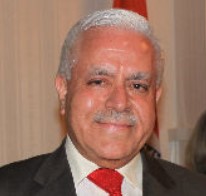

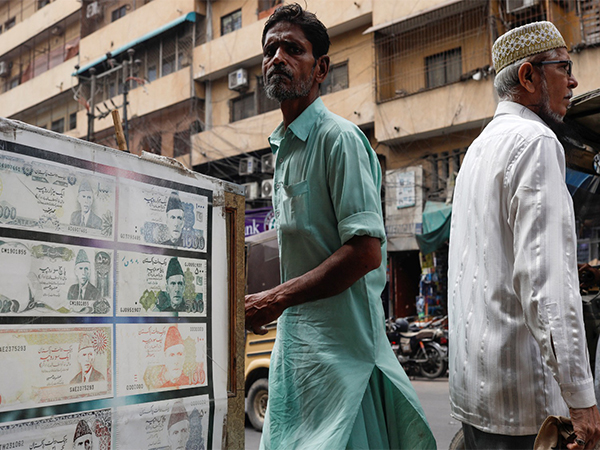
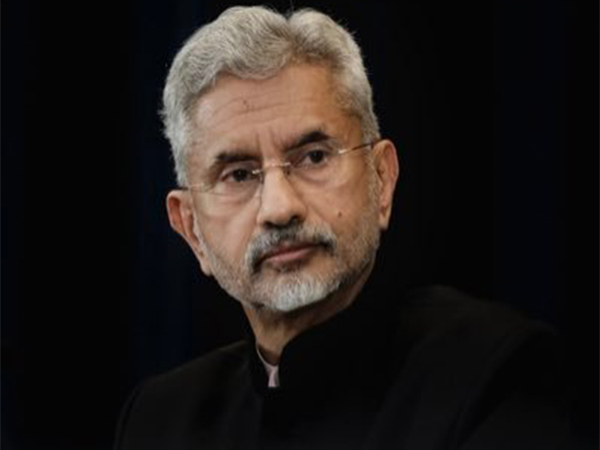
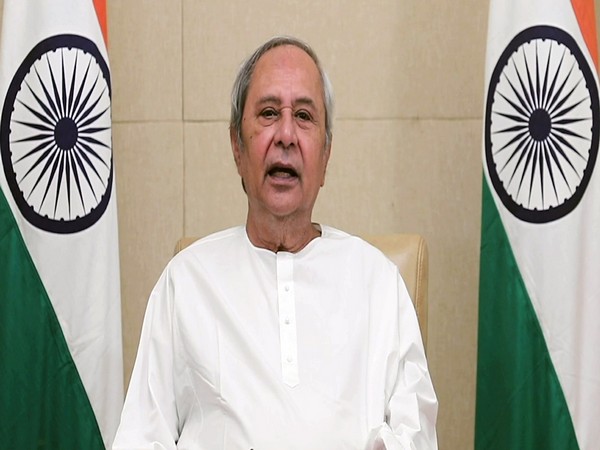

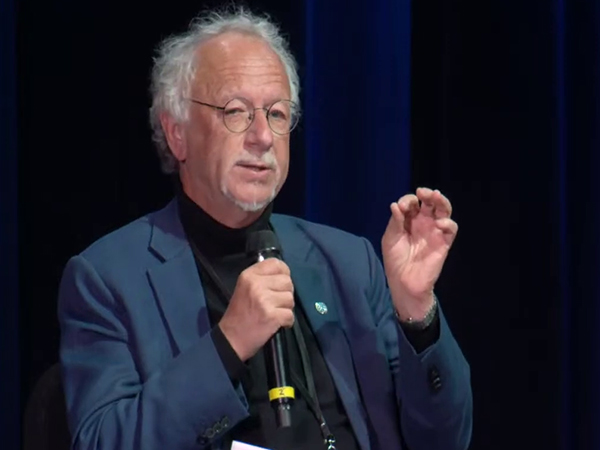

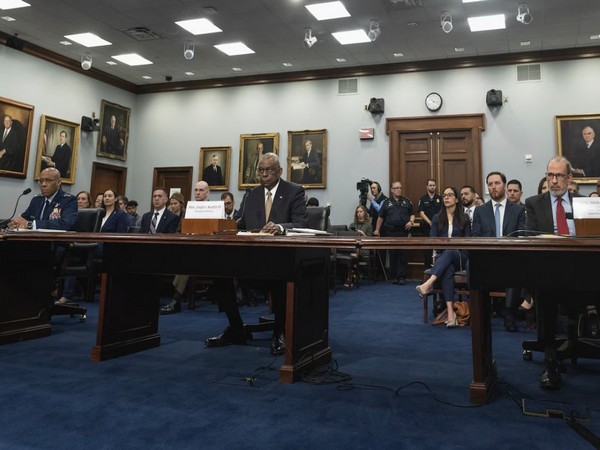

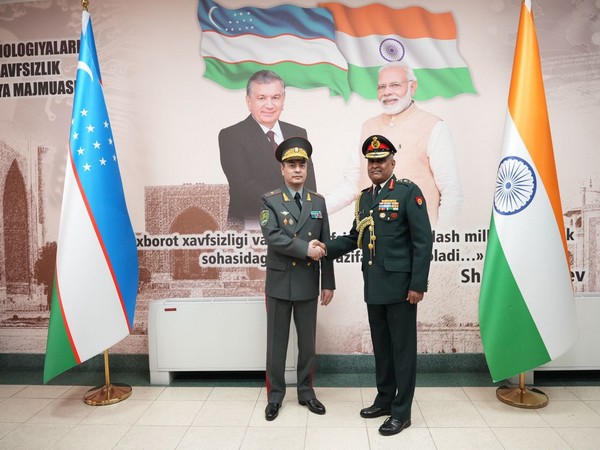







POST COMMENTS (0)